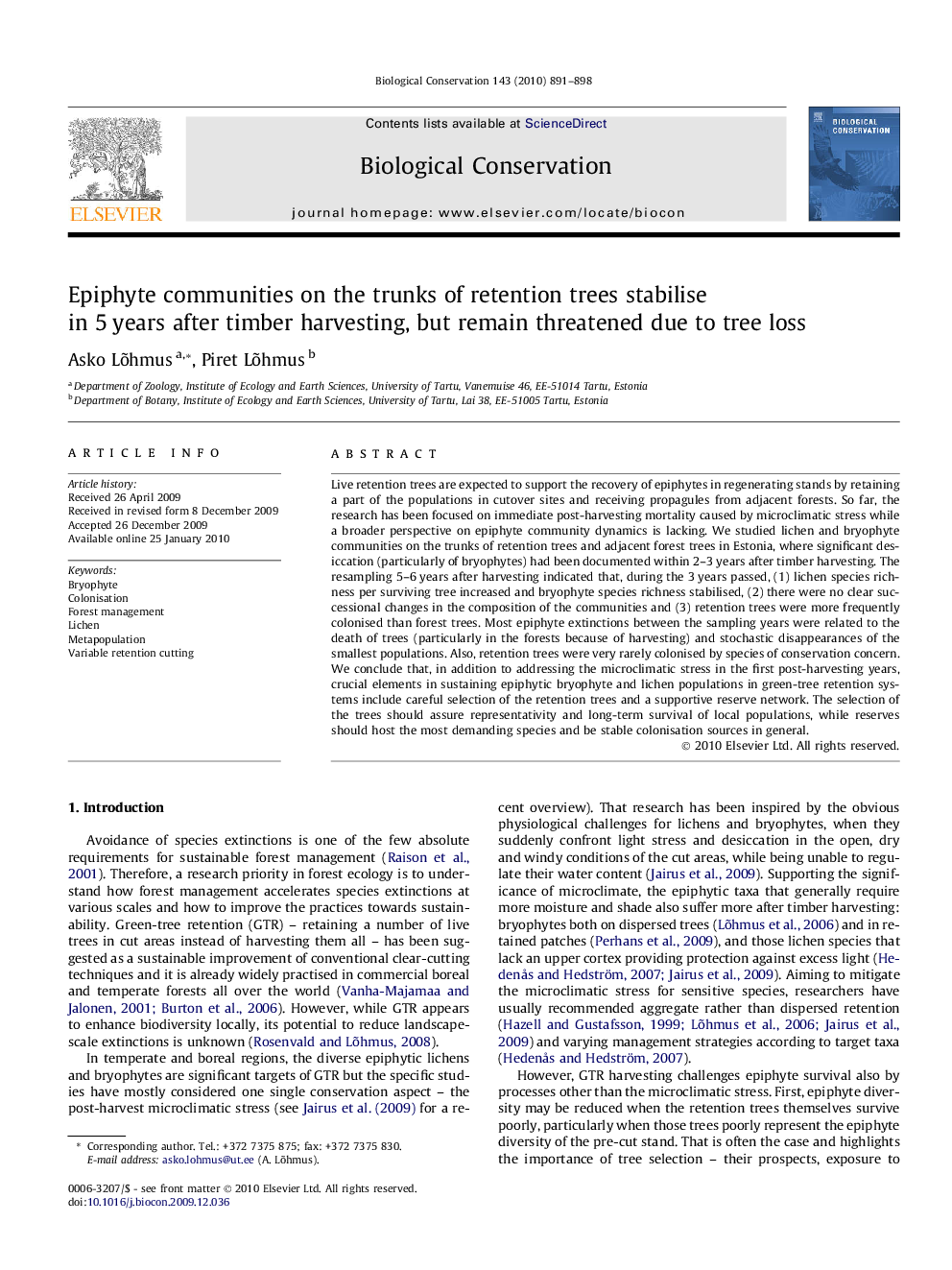| کد مقاله | کد نشریه | سال انتشار | مقاله انگلیسی | نسخه تمام متن |
|---|---|---|---|---|
| 4385772 | 1304549 | 2010 | 8 صفحه PDF | دانلود رایگان |

Live retention trees are expected to support the recovery of epiphytes in regenerating stands by retaining a part of the populations in cutover sites and receiving propagules from adjacent forests. So far, the research has been focused on immediate post-harvesting mortality caused by microclimatic stress while a broader perspective on epiphyte community dynamics is lacking. We studied lichen and bryophyte communities on the trunks of retention trees and adjacent forest trees in Estonia, where significant desiccation (particularly of bryophytes) had been documented within 2–3 years after timber harvesting. The resampling 5–6 years after harvesting indicated that, during the 3 years passed, (1) lichen species richness per surviving tree increased and bryophyte species richness stabilised, (2) there were no clear successional changes in the composition of the communities and (3) retention trees were more frequently colonised than forest trees. Most epiphyte extinctions between the sampling years were related to the death of trees (particularly in the forests because of harvesting) and stochastic disappearances of the smallest populations. Also, retention trees were very rarely colonised by species of conservation concern. We conclude that, in addition to addressing the microclimatic stress in the first post-harvesting years, crucial elements in sustaining epiphytic bryophyte and lichen populations in green-tree retention systems include careful selection of the retention trees and a supportive reserve network. The selection of the trees should assure representativity and long-term survival of local populations, while reserves should host the most demanding species and be stable colonisation sources in general.
Journal: Biological Conservation - Volume 143, Issue 4, April 2010, Pages 891–898